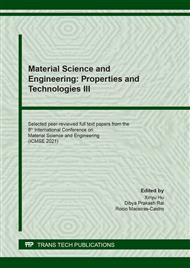p.81
p.89
p.95
p.101
p.109
p.115
p.123
p.129
p.135
Study on PtNWs/c Catalyst for Proton Exchange Membrane Fuel Cell
Abstract:
With the development of PEMFC, the process of commercial fuel cell is also accelerating. As one of the key points of fuel cell, catalyst is facing the problem of how to improve its performance and life. In order to improve the durability of fuel cell catalyst, this paper will study the preparation of Pt nanowire catalyst, so as to improve the electrochemical performance and durability of the catalyst. PtNWs were prepared by soft template method. By TEM, we can clearly see that PtNWs with uniform length were obtained by soft template method. Because of the special structure, the ORR performance of the catalyst was better. The test results showed that the hydrogen peroxide desorption from PtNWs was easier, and the half wave potential of LSV curve shifted forward, which indicated that the NWs catalyst performed better ORR performance. The linear structure of PtNWs is not easy to dissolve and lose compared with Pt particles, and the linear structure is more conducive to the transfer of materials and electrons at the reaction interface, so it can show better performance and life.
Info:
Periodical:
Pages:
109-113
Citation:
Online since:
March 2022
Authors:
Keywords:
Price:
Сopyright:
© 2022 Trans Tech Publications Ltd. All Rights Reserved
Share:
Citation:


